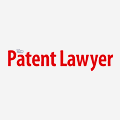As a result of the great technological advances achieved in recent years, Artificial Intelligence (AI) has become popular and, thus, research and technologies making use of it are being developed on an increasing scale. Today the use of AI isnotoriously recognized in several fields of application in everyday life, such as financial markets, industry, agriculture, transportation and even entertainment.
According to the Brazilian Patent and Trademark Office (“INPI”), the definition of AI has evolved over the years, but basically it refers to systems or machines that replicate human intelligence to perform tasks and that can be iteratively improved based on the information they collect, in a process of self-optimization, without the need for the intermediary of human activity to configure them. This happens through the interconnection of millions of data and pattern recognition, thus achieving processes very close to perfection. In this way, failures resulting from human action, influenced by external factors, are practically null by using AI.
Initially, the field of AI was divided into two: “rules-based” and “neural-networkbased”. The first taught computers to act based on logical rules (IF/THEN). The second was intended to replicate the architecture of biological neuron networks – receiving and transmitting information (hence the origin of its name).
From 2012, neural networks began to stand out in the form of “deep learning” and the focus of this type of AI was destined to several applications such as deciphering human speech, translating documents, recognizing images, predicting consumer behavior, identifying frauds and driving autonomous vehicles. In this scenario, the following personal assistants stand out: SIRI – from Apple, ALEXA – from Amazon, CORTANA – from Microsoft and GOOGLE ASSISTANT– from Google.
Among the applications mentioned and in view of their functionalities, the driving of autonomous vehicles is more complex, since this platform needs to be connected with several sensors of the vehicle itself, in addition to a GPS and a traffic analysis system, considering traffic lights, possible obstacles and other vehicles.
Despite all the complexity involved, there are prototypes and even some autonomous models being commercialized that prospect this reality, and efforts are now focused on finding ways to make this technology accessible to the entire population in the near future.
The reality is that the last two decades has seen an explosion of technologies that have completely modified the way of living in an interconnected digital world. The way of negotiating, innovating, producing and creating have been directly impacted and are growing exponentially.
According to information available on the WIPO’s website, while AI is currently the most prolific new technology in terms of the number of patent applications and granted patents, Internet of Things (IoT) is estimated to be the largest in terms of market size, followed by big data technologies, robotics, 3D printing and the fifth generation of mobile services (5G).
AI at the INPI:
A study entitled Artificial Intelligence in Machinery and Equipment, prepared by the Nucleus for Intelligence in Industrial Property, in partnership with the Brazilian Agency for Industrial Development (ABDI) and the Ministry of Economy, in April 2022, revealed that the number of filings related to machinery and equipment involving AI at the INPI has been exponentially growing since 2009, when analyzing data from the overall sample, and a more accentuated growth as of 2016, when considering only resident filings, as shown in the figure 1 (below left).
According to the study, the concentration of patent applications by applicant country (origin of technology) is as follows: United States: 2,181; Brazil: 576 cases; Japan: 563 cases; France: 276 cases; Germany: 225 cases; Netherlands: 222 cases; Sweden: 217 cases; China: 155 cases; Switzerland: 116 cases and England: 105 cases.
It is possible to observe that, although there is a substantial difference in relation to the United States, Brazil is in a prominent position compared to other countries of great relevance on the world scenario.
Referring to the data obtained in the study, a survey was carried out to detect the main applicants of patent applications related to embedded AI to identify whether they are concentrated in a restricted or distributed group.
Among the top applicants in the overall sample, the following stand out: Nissan: 248 cases, Microsoft: 238 cases, Qualcomm: 152 cases, Scania: 129 cases, Boeing: 124 cases and Philips: 114 cases. Note the predominance of companies related to the transportation area, wherein the sum of the filings of these companies represents approximately 18% of the overall sample.
According to the study AI in Machinery and Equipment, 91% of the overall sample of AIrelated applications refer to patent applications linked to some type of machinery or equipment.
Further, it also revealed that the top five functional applications of AI identified in machinery and equipment are: Computer Vision (3,223), Control Method (546), Distributed Artificial Intelligence (312), Speech Processing (75) and Natural Language Processing (74).
Finally, it is further important to note that, unlike the applicants in the overall sample, which are mostly companies, the resident applicants are distinguished by a strong presence of universities and research centers. Such fact reveals a good opportunity for companies interested in signing technology transfer agreements or in joint development with these institutions.
How to protect an invention that uses AI in Brazil?
In Brazil, an invention that uses AI is outlined by the Guidelines for Computer-Implemented Inventions – IIC (INPI PR No. 411/2020) which states that: “artificial intelligence (AI) techniques, including machine learning and deep learning tools, among others, when applied to the solution of technical problems, may be considered an invention”.
It is also noteworthy that, like any patent application, in addition to meeting the patentability requirements set forth in Article 8 of the Brazilian Industry Property Law (IPL), the application must comply with the descriptive sufficiency requirement, that is, the description of the invention must be sufficiently clear and precise for a person skilled in the art to be able to reproduce it.
Therefore, the technical problem to be solved by the invention must be explicit in the specification, as well as the input variables used by the system and how this system will manipulate them to solve the technical problem.
It should be noted that there is an impediment to patent protection when the AI supports the application in methods that cannot be considered an invention, as the provisions of Article 10 of the Brazilian IPL, such as operative or surgical methods or commercial, accounting or financial methods.
What about inventions generated by AI?
According to the provisions of Article 6 of the Brazilian IPL, the inventor is referred to as a person.
The INPI recently published on its website that the INPI’s Specialized Federal Attorney’s Office understands that it is not allowed to indicate or appoint AI as an inventor in a Brazilian patent application, based on the provisions of Article 6 of the Brazilian IPL, as well as the Paris Union Convention and the TRIPS Agreement, according to opinion No. 00024/2022/CGPI/PFE-INPI/ PGF/AGU.
In this regard, patent application BR 11 2021 008931 4 (WO 2020/079499), filed under the authorship of an AI called “DABUS” was withdrawn from the Brazilian national phase. See figure 2.
In addition, there is a Bill PL 21/2020, known as the Legal Framework for AI, drafted by congressman Eduardo Bismarck, which aims to establish the rules, principles and guidelines that must be followed by public authorities, companies, various entities and individuals for the development and application of AI in Brazil.
The text, which is pending assessment by the House of Representatives, establishes that the use of AI will be based on respect for human rights, human dignity and democratic values; equality, non-discrimination, plurality, free initiative and data privacy, among other points. For this, the text details a series of rights and duties of the so-called AI agents, which can be development agents or AI operation agents, as well as the creation of an AI impact report, to be prepared by these agents, describing the technology, including risk management and containment measures.
AI in other jurisdictions:
- Europe:
As in Brazil, the number of AI-related patent applications has grown exponentially since 2012 at the European Patent Office (EPO), as can be seen in the chart above: The European patent legislation has many similarities with the Brazilian one, such as the evaluation of novelty and inventive activity requirements of the invention, as well as the non-patentability of certain matters, such as discoveries, scientific theories, mathematical methods, aesthetic creations, schemes, rules and methods for performing mental acts, games or business, computer programs per se, and presentation of information.
With respect to the examination of applications involving AI at the EPO, the Appeals Division rendered a decision (T 161/18) that refused a method for assessing cardiac output of blood pressure based on an artificial neural network with weight values determined by learning.
Initially, the Examination Division found that the application did not comply with the inventive activity requirement. In turn, the Appeal Division maintained the rejection, but for different reasons.
In the appeal phase, it was considered that the application did not present descriptive sufficiency in relation to the input data used for training the neural network, making it impossible for a person skilled in the art to reproduce the invention. And, since the person skilled in the art could not implement the invention, the technical effect generated by the claimed neural network would not contribute to the inventive activity.
Another important point is that the person skilled in the art must have the means and capacity for routine work and experimentation.
In addition, the examination of patent applications with mixed complexity may require expertise in several fields, for example, a machine learning specialist and an aerospace engineer, thus forming a “team skilled in the art”.
The understanding of the European Patent Convention (EPC) signatory countries is that their patent system is robust enough to handle technical developments in the field of AI. Regarding the authorship, the understanding is that the inventor is the person who created the invention by his or her own creative activity.
- United States:
As in Europe and Brazil, the number of patent applications related to AI grows exponentially in the United States, as can be seen from the graph above.
A more significant increase can be seen from 2002 onwards due to the changes made by the American Inventors Protection Act (AIPA) at the end of 1999 and its implementation period (in gray in the figure). The horizontal axis of the graph refers to the year of the first pre-grant publication of a patent or a patent application, or the year that a granted patent was published.
The main US Patent Court confirmed on August 5, 2022, that AI is not considered an “individual” under the US Patent Act and therefore AI cannot be appointed as an inventor of a patent.
According to the USPTO, current statutes, case law and patent regulations limit an inventor to a human being and preclude a broad interpretation that would encompass an AI machine. Then, it is observed that the decision of the American Federal Circuit only reinforces what was decided in other foreign jurisdictions.
Europe, the UK and Australia have taken a similar stance on AI as an inventor. On the other hand, South Africa — the only jurisdiction in which the patent was granted to DABUS — does not substantively review patent applications or conduct an examination on the merits, so it is believed that this issue has not been sufficiently debated in that country.
Therefore, it is noticeable that there is worldwide agreement regarding the fact that AI cannot be considered as the inventor of a patent application. However, with the fast evolution of AI experienced around the world, a review and subsequent adaptations of legislative actions will be necessary to update the current laws that govern patents in this regard.







